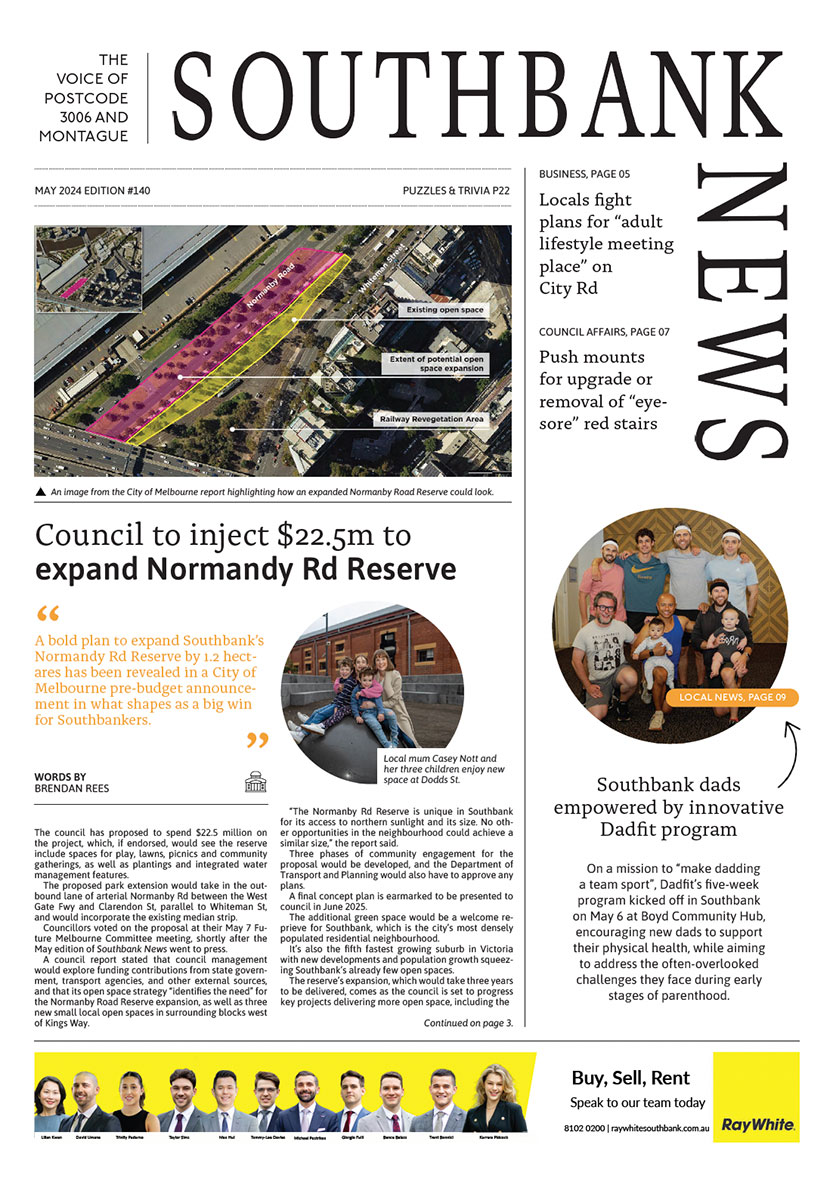
Waiting for a tram in Southbank
By Robin Grow - President, Australian Art Deco & Modernism Society Melbourne boasts a tramways network. Multiple lines to the south and east run through Southbank along the beautiful tree-lined boulevard of St Kilda Rd. A major part of the network is the tram shelters. Over the past decade, new shelters have been installed – raised to the level of tram doors to allow wheelchair access and finished in glass and metal and with electronic displays of services. But for a long time, tram shelters were more rudimentary. Many were built in the late 19th and early 20th centuries, constructed and managed by the Tramways Trust (later the Metropolitan Tramways Board). Sixteen survive today, and a number are now heritage-listed, reminding us of their importance to the network and also of their design from a century ago. One of the best is at the corner of St Kilda Rd and Dorcas St, constructed in the central strip of the road. The delightful little pavilion was painted in the green and cream that was long used as the livery for Melbourne trams, and it features an interesting mix of architectural motifs and materials. Designed by Frank Stapley, architect and city councillor, it emerged in 1917 when passengers were still carried by cable cars. Constructed mainly of timber, it had a single entrance and passengers sat on slatted timber seats around the walls. The shelter has a half-hipped roof with deep overhanging eaves and a gable at each end, faced with shingles, and with a somewhat strange protruding section. The roof is clad in red asbestos tiles, probably supplied by Wunderlich in Southbank, and passengers could see approaching trams through the stylish multipaned arched windows. The shelter is closed today, and the entrance is blocked by metal doors, but it continues to enhance the existing streetscape. Two similar shelters were built in 1927 just after the conversion of St Kilda Rd to an electrified service. As so often happened in Melbourne’s history, issues and disputes arose about ownership and responsibility for the shelters. Councils were keen to gain control of the shelters and were prepared to undertake the cost and responsibility of maintaining them. Other styles were introduced for protection of passengers over the years but the pre-WWII versions remain as charming reminders of earlier times •

La Camera celebrates 25 years at Southgate

New residential tower planned for heart of Southbank





 Download the Latest Edition
Download the Latest Edition